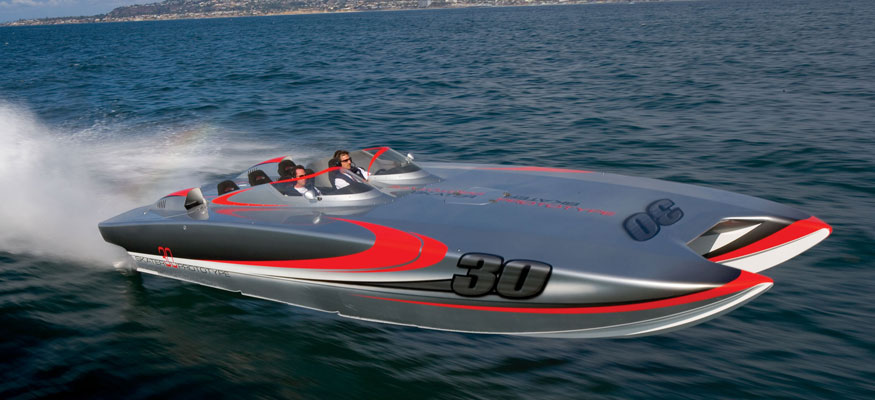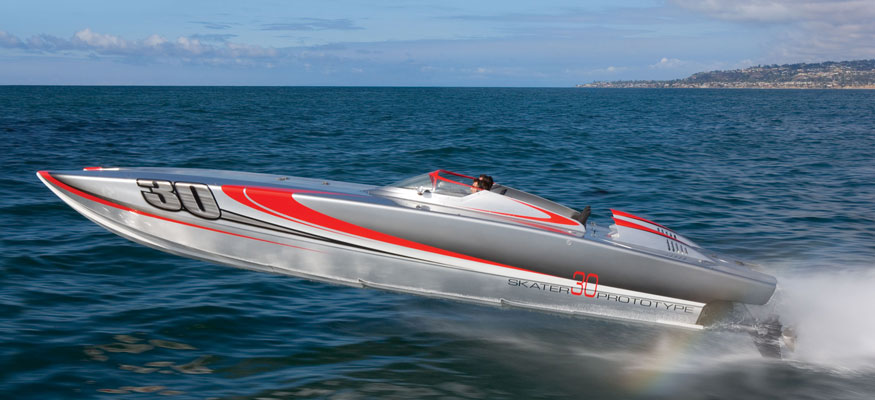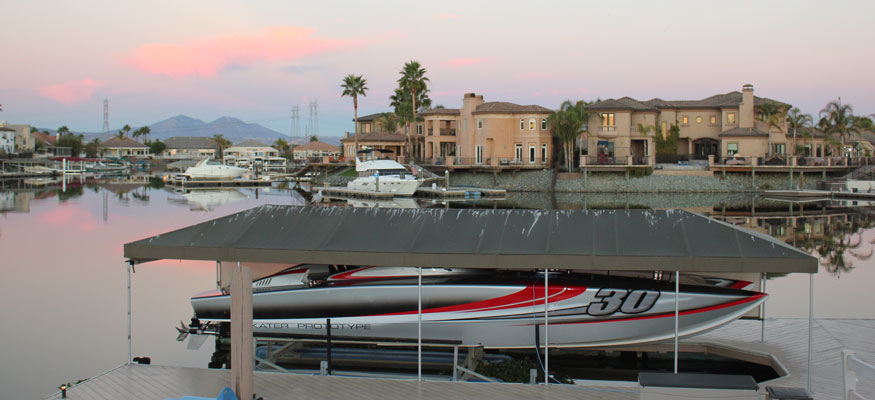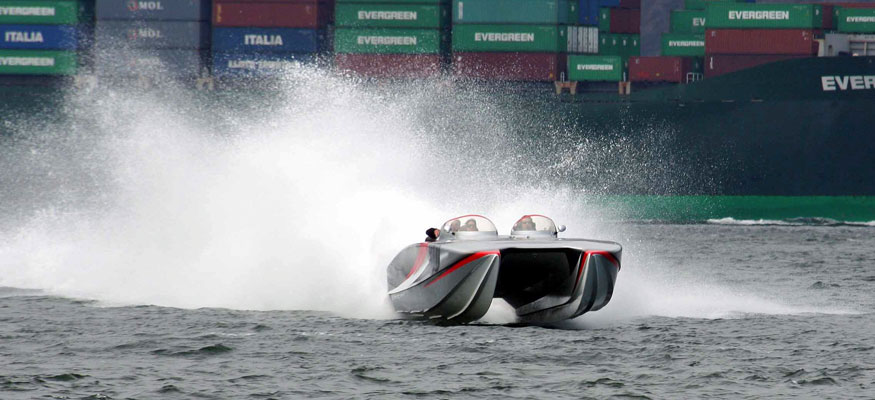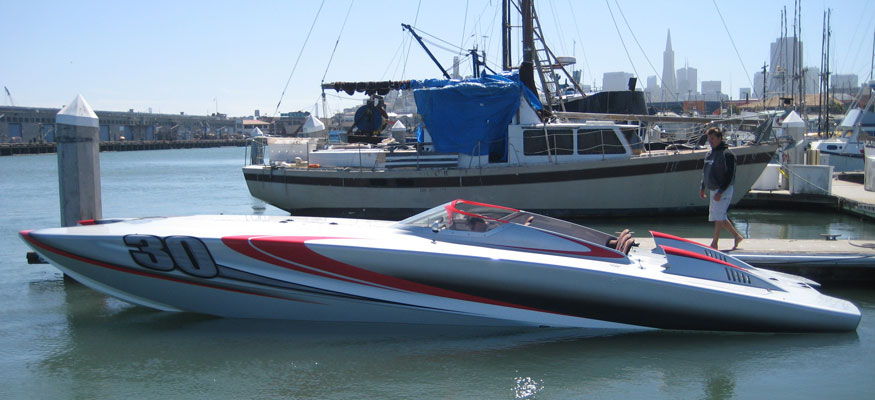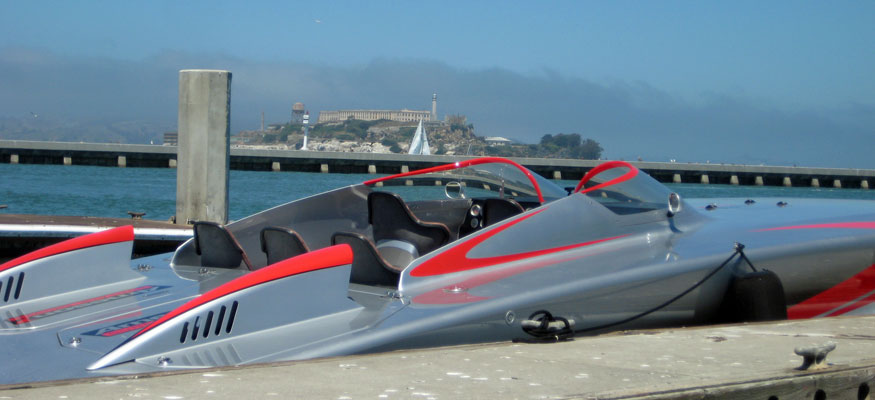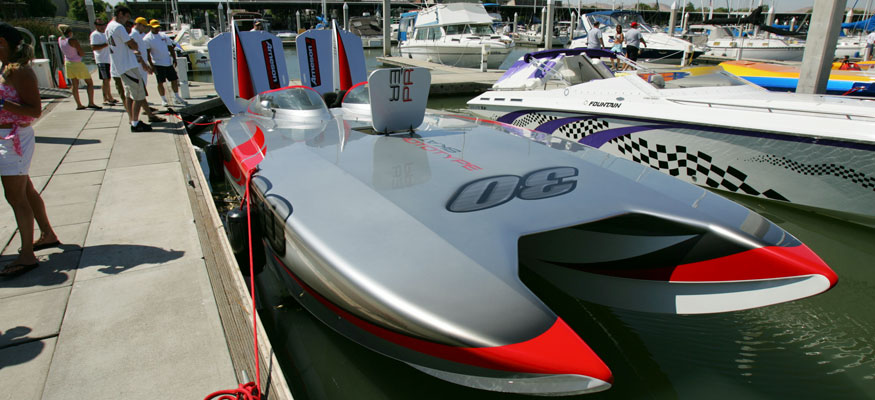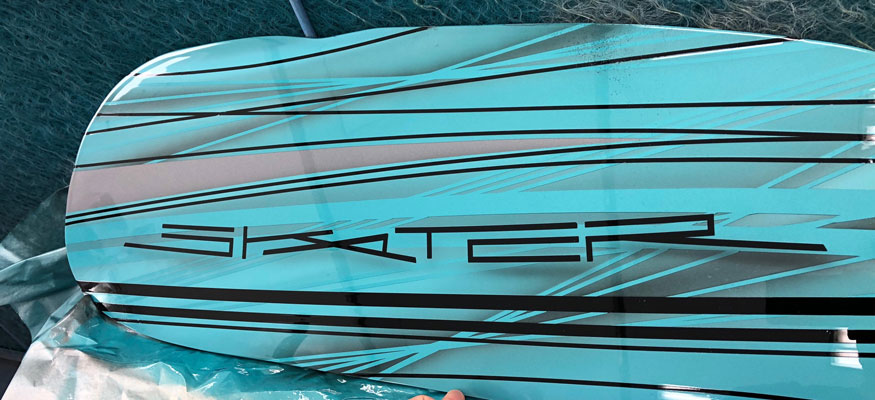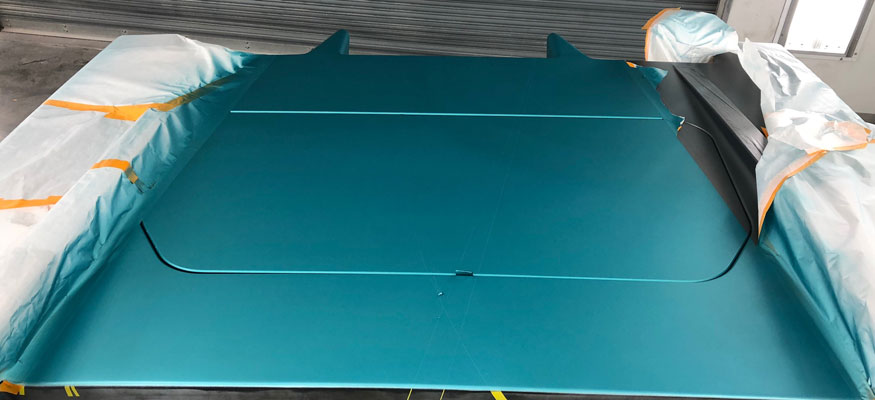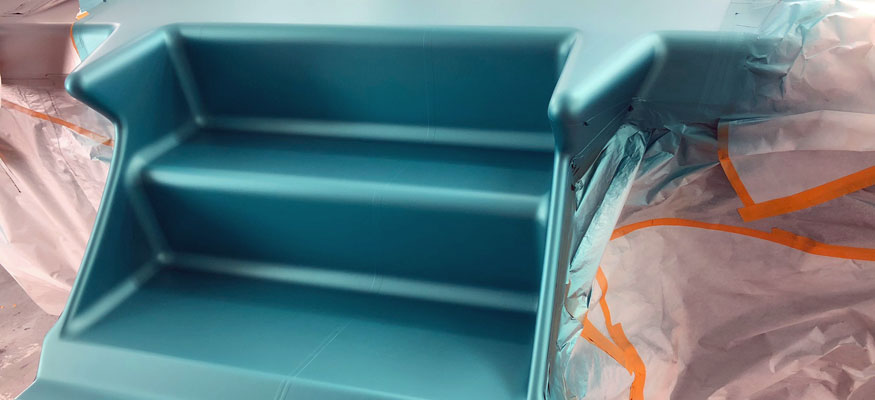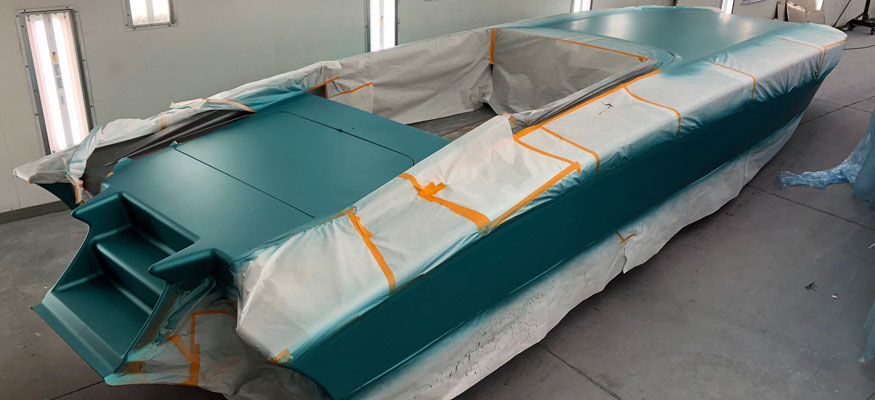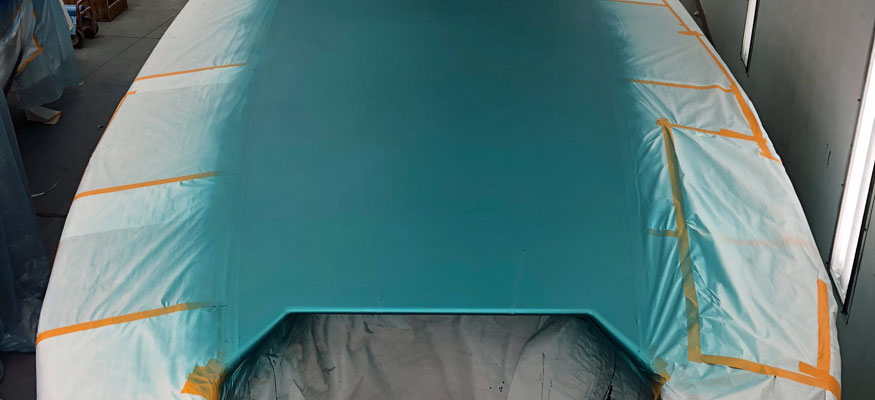Skater 30 Prototype Repower And Renovation: Coming Full Circle
When Mercury Marine introduced its first supercharged six-cylinder Verado outboard engine—a 200-hp model—in 2004, rumor had it that next up was a 400-hp offering. Despite that Claus Bruestle, then manager of the Verado program, tried to dispel that rumor by saying the power output was “possible” but not “not needed at this time,” good gossip is hard to squash. So when the next Verado outboard turned out to be a 300-hp version, more than a few folks were disappointed.
Completed in the 2005, the Skater 30 Prototype is among the most beautiful catamarans the Douglas, Mich., company has ever built (click image to enlarge).
Among the performance-boat owners who had hoped for more was Dale Rayzor of Discovery Bay, Calif. Rayzor, who owned a 28-foot Skater Powerboats catamaran with Mercury Racing 300XS outboards that topped out an impressive 120 mph, had ordered the first Skater 30 Prototype catamaran and had hoped to have the Douglas, Mich., builder hang 400-hp Verado outboards from its transom. When he learned that those outboards weren’t coming—at least anytime soon—he went in a radically different direction and had the boat equipped with twin naturally aspirated 800-hp Sterling Performance engines and Arneson ASD-7M drives.
“It turned into a beast,” said Rayzor.
Capable of running 150-plus mph, the finished product, which was equipped with a foot-throttle and foot-trim control for single-operator operation, was breathtaking. With its sweeping, low-profile lines and moulton silver-and-red color scheme, the flat-deck 30-footer was one of the sexiest creations ever to come out of the Skater facility. But a terrfiying yet miraculously non-fatal accident, which resulted in years of acrimony, recrimination and legal wranglings not to be rehashed here, during the 2006 Big Cat Poker Run in Northern California put the boat in the national spotlight. Two years later following repairs at Skater, it was back on the water, though in limited fashion.
“I was only putting about 20 hours a year on it because of the expense of running it,” say Rayzor. “It was sort of my go-to boat for trips to San Francisco Bay.”
Thomas Kulesia, II, designed the new graphics for the 30-footer, while Chris Mills is handling their application (click image to enlarge). Image coutesy/copyright No. Coast Design.
The introduction of the Verado 400R engine a few years ago sparked Rayzor’s interest in swapping out his Sterling mills and Arneson drives for 400-hp outboards, which had been his initial vision for the boat. The simplicity and reliability of that power package appealed to him far more, he said, than being able to run 150 mph. The project began in 2016.
“I originally wanted a boat with 400 hp outboards, and now they have them—with five-year warranties,” he said. “We’re predicting it will run 130 mph, which is plenty fast for an open-cockpit pleasure boat. It will cruise between 80 and 100 mph, which is what I want to do 90 percent of the time.”
While Rayzor has changed up the dash of his boat by replacing its analog gauges and switches with three Simrad touchscreens—one 16-inch monitor flanked by two seven-inch units—he’s retained the foot-throttle-and-trim control, albeit one from In-Control that is compatible with Mercury Marine’s Digital Throttle and Shift (DTS) system. He also has paddle-wheel-style trim controls from CP Performance mounted on the boat’s steering wheel.
“I raced motocross when I was younger and I just could not imagine not having steering and throttle control,” said Rayzor. “In my teens, I grew up knowing (offshore racers) Rick Bowling, Karl Koster and Rod Karnofel and they all raced with foot throttles. Plus, the (Sacramento River) Delta is so twisty and windy that you want to have both hands on the wheel.”
From its storied past to its immediate present, here’s a look at the Skater 30 Prototype catamaran.
Though Skater applied the catamaran’s original paintjob, which was designed by Chris Dilling at Grafik EFX, Chris Mills at Boat Customs in Caledonia, Mich., is handling the boat’s new paintwork. Thomas Kulesia, II, of No. Coast Design in Elkhart, Ind., designed the graphics package. Once completed the boat will returned to Skater for rigging and interior installation.
“Thomas did all the designs, did the layout and cut all the masks and I’m super happy with the design he created,” said Rayzor. “Chris is doing the paint application.’
The boat should be completed by June. Rayzor said he plans to bring the boat back to California for propeller testing in preparation for competition in the Lake of the Ozarks Shootout in Missouri in August.
“Dave Dewald is building four sets of propellers for us,” he said. “At least that’s what we’ll start with. We’ll probably end up with 20 sets of props before we’re done. It’s going to be a really fun boat. And it’s going to be what I originally wanted.”

